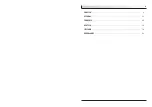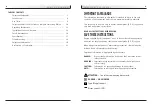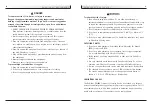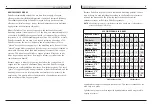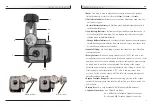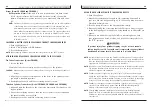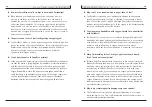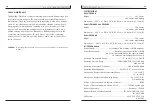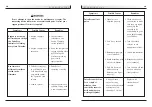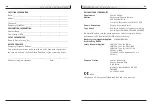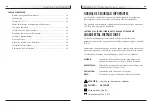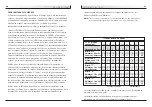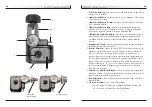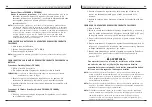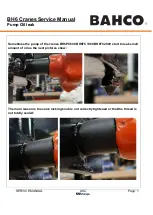
I n t r o d u c t i o n
8
U s e T i m e s
9
Because PulseDose responds to each individual’s breathing patterns, the use
time will vary for each individual depending on the PulseDose prescription
rate and the breath rate. The following chart shows the theoretical
ambulatory ranges for DeVilbiss PulseDose products.
NOTE–
All ambulatory ranges are calculated assuming a breath rate of 20 breaths per
minute in PulseDose (PD) mode.
CF=Continuous Flow
PD=PulseDose
HOW PULSEDOSE WORKS
PulseDose dramatically extends the use time from a supply of oxygen,
offering increased mobility with improved comfort and increased efficiency.
The reliability and safety of PulseDose oxygen delivery has been proven
effective in clinical testing as well as through independent tests performed
by physicians and respiratory therapists.
What is PulseDose? The concept is based on the fact that the normal
breathing pattern is inhalation for 1/3 of the time, and exhalation about 2/3
of the time. At 20 BPM the oxygen delivered in continuous flow, assuming
inspiration is 1/3 of the breathing cycle, would be 16.5 cc/LPM. As a result,
PulseDose extends the use time of an oxygen system by an average of 3:1.
PulseDose senses the start of inhalation and instantly releases a short
“pulsed” dose at the very beginning of the breathing cycle. Since all of the
“pulsed” oxygen finds its way deep into the lungs, less oxygen is required to
accomplish the same effect than with traditional continuous flow oxygen
systems. This means that a PulseDose oxygen system will last two to four
times longer than a continuous flow oxygen system, yet still provide the
same therapeutic benefit.
Because oxygen is released only during inhalation, the constant flow of
oxygen into the nostrils is eliminated. Many users find PulseDose oxygen
delivery more comfortable than continuous flow delivery systems. The short
“pulse” of oxygen delivered during inhalation is almost undetectable, and the
humidity in the room air helps maintain a normal level of moisture in the
nasal cavity. This greatly reduces the discomfort of dehydration associated
with a continuous flow oxygen system.
Specifications subject to change without notice. This chart is intended to be
used only as a guide.
Cylinders vary in gaseous liter capacity by manufacturer which may result in
varying use times.
16.5 24.75 33 41.25 49.5
66
82.5
99
1
1.5
2
2.5
3
4
5
6
2.7
1.8
1.4
1.1
.9
.7
.6
.4
8.3
5.5
4.1
3.3
2.8
2.1
1.7
1.4
2.8
1.9
1.4
1.1
.9
.7
.6
.5
8.6
5.7
4.3
3.4
2.9
2.1
1.7
1.4
4.0
2.7
2.0
1.6
1.3
1.0
.8
.7
12.1
8.1
6.1
4.9
4.0
3.0
24
2.0
6.9
4.6
3.5
2.8
2.3
1.7
1.4
1.2
21.0 14.0 10.5
8.4
7.0
5.2
4.2
3.5
11.4
7.6
5.7
4.6
3.8
2.8
2.3
1.9
34.4 23.0 17.2 13.8 11.5 8.6
6.9
5.8
Delivered Volume
cc’s:
Flow Rate:
Walkabout Mini M-
6 Cylinder 164
Gaseous Liters
Hideaway ML-6
Cylinder 170
Gaseous Liters
Walkabout 1 “C”
Cylinder 240
Gaseous Liters
Walkabout 2 “D”
Cylinder 415
Gaseous Liters
Walkabout 3 “E”
Cylinder 682
Gaseous Liters
Mode
CF
PD
CF
PD
CF
PD
CF
PD
CF
PD
USE TIMES SHOWN IN HOURS
Содержание PulseDose LT PD1000
Страница 2: ...ENGLISH 4 ESPA OL 22 FRAN AIS 40 DEUTSCH 58 ITALIANO 76 NEDERLANDS 94 3...
Страница 57: ......


